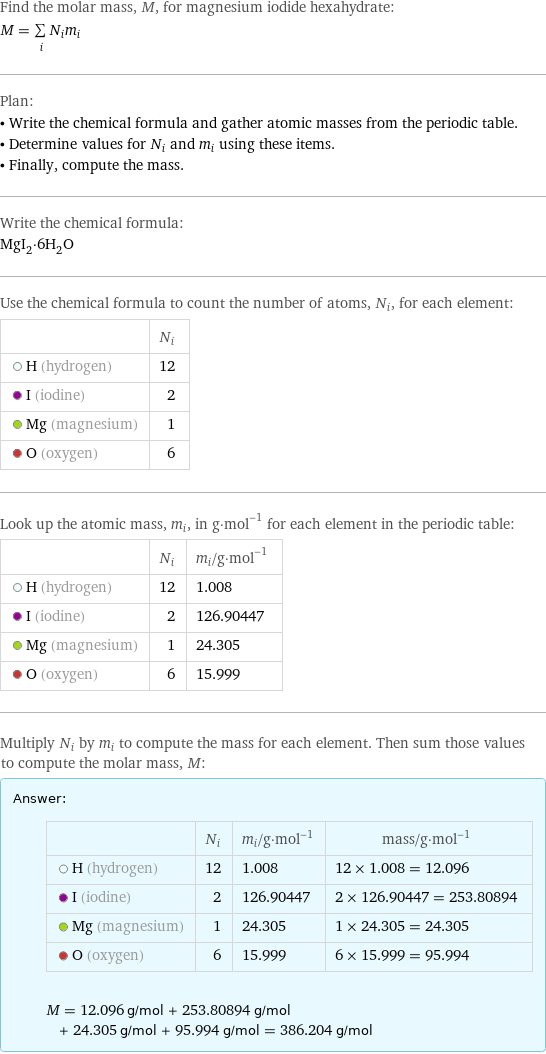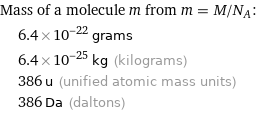Input interpretation

magnesium iodide hexahydrate | molar mass
Result

Find the molar mass, M, for magnesium iodide hexahydrate: M = sum _iN_im_i Plan: • Write the chemical formula and gather atomic masses from the periodic table. • Determine values for N_i and m_i using these items. • Finally, compute the mass. Write the chemical formula: MgI_2·6H_2O Use the chemical formula to count the number of atoms, N_i, for each element: | N_i H (hydrogen) | 12 I (iodine) | 2 Mg (magnesium) | 1 O (oxygen) | 6 Look up the atomic mass, m_i, in g·mol^(-1) for each element in the periodic table: | N_i | m_i/g·mol^(-1) H (hydrogen) | 12 | 1.008 I (iodine) | 2 | 126.90447 Mg (magnesium) | 1 | 24.305 O (oxygen) | 6 | 15.999 Multiply N_i by m_i to compute the mass for each element. Then sum those values to compute the molar mass, M: Answer: | | | N_i | m_i/g·mol^(-1) | mass/g·mol^(-1) H (hydrogen) | 12 | 1.008 | 12 × 1.008 = 12.096 I (iodine) | 2 | 126.90447 | 2 × 126.90447 = 253.80894 Mg (magnesium) | 1 | 24.305 | 1 × 24.305 = 24.305 O (oxygen) | 6 | 15.999 | 6 × 15.999 = 95.994 M = 12.096 g/mol + 253.80894 g/mol + 24.305 g/mol + 95.994 g/mol = 386.204 g/mol
Unit conversion

0.3862 kg/mol (kilograms per mole)
Comparisons

≈ 0.54 × molar mass of fullerene ( ≈ 721 g/mol )

≈ 2 × molar mass of caffeine ( ≈ 194 g/mol )

≈ 6.6 × molar mass of sodium chloride ( ≈ 58 g/mol )
Corresponding quantities

Mass of a molecule m from m = M/N_A: | 6.4×10^-22 grams | 6.4×10^-25 kg (kilograms) | 386 u (unified atomic mass units) | 386 Da (daltons)

Relative molecular mass M_r from M_r = M_u/M: | 386